Eduard 1/48 Spitfire Vb
The Airplane:
Late in 1940, the RAF believed the appearance of the pressurized Junkers Ju 86P over Britain would signal the start of a high altitude bombing offensive by the Luftwaffe. The Air Ministry called for development of a pressurized Spitfire, with a new Merlin; this became the Mk VI. Due to the time it would take to develop the new fighter, an emergency stop-gap measure was needed, which became the Mk V.
Basically, the Mk V was a Mk I airframe strengthened tp take the Merlin 45 engine, which delivered 1,440 hp, and incorporated a new single-speed single-stage supercharger. The carburetor was also modified to allow zero gravity maneuvers without fuel flow cutoff. Supermarine began delivery of the Mk V in early 1941 as the Mk. Va (Type 331) of which 94 were constructed with the original eight-gun wing, and the Mk Vb (Type 349) armed with two 20mm Oerlikon cannon; the Vb became the main production version.
Over the course of production, changes were incorporated, some of which became standard on all later Spitfires. Starting in early 1941 the round section exhaust stacks were changed to a fishtail type, marginally increasing exhaust thrust. After some initial problems with the Mk I oil coolers, a larger one that could be recognized by a deeper housing with a circular entry was fitted. Metal ailerons were added in May 1941, improving roll and overall maneuverability. In early 1942, a "blown" cockpit canopy was introduced to increase the pilot's head-room. Many mid to late production Vbs used the improved windscreen the internally-mounted armored glass windscreen. Because this was taller than that of the earlier version, canopies were not interchangeable and could be distinguished by the wider rear framing used with the late-style windscreen. Different propellers were fitted, according to which factory built the airframe: Supermarine and Westland-manufactured Vbs used de Havilland constant speed props with narrow metal blades like the Mk I, while Castle Bromwich airplanes were fitted with either a wide-bladed Rotol constant speed propeller with metal blades 10 ft 9 in diameter, or a Rotol unit with “Jablo” (compressed wood) blades, The Rotol spinners were longer and more pointed than the de Havilland, increasing overall length by 3.5 in; they gave a modest increase in speed overr 20,000 ft and increased service ceiling. Many Spitfire Vbs were fitted with "gun heater intensifier" systems on the exhaust stacks, identified by a short tubular intake on the first stack and a narrow pipe into the cowling from the rear exhaust. The Mk V was the first Spitfire able to carry specially-designed slipper-type drop tanks.
With the arrival of the Fw 190 in August 1941 the Spitfire Vb was outclassed. In an effort to counter this threat at lower altitudes, the Vb was the first Spitfire to use clipped wingtips, reducing wingspan to 32 ft 2 in, which increased roll rate and airspeed at lower altitude. These “clipped Spits” used the Merlin 45M which had a smaller "cropped" supercharger impeller and boost increased to +18 lb, producing 1,585 hp at 2,750 ft and increasing rate of climb to 4720 ft/min at 2,000 ft.
The Eagle Squadrons:
In the mythology of aerial warfare, the Eagle Squadrons - “the Yanks in the RAF” - rank with the Lafayette Escadrille and the American Volunteer Group for mystique. The Eagles were far more like the young pilots of the Escadrille Lafayette - none were professionals before joining the unit - than the AVG, all of whom were professional Army, Navy or Marine Corps pilots, whose mission was underwritten by the U.S. government.
By the summer of 1940, the British government wanted as many Americans in RAF uniform as possible as props in the propaganda effort to swing American opinion in favor the the Allies. Sweeney's operation was coordinated in Canada with the support of World War I air ace Billy Bishop and in the United States with well-known aviation artist Clayton Knight, who founded the Clayton Knight Committee. By Pearl Harbor, the Knight Committee had processed and approved 6,700 applications from Americans to enter either the RCAF or RAF
Most of those among the early volunteers were adventurers with some flight experience, none of it up to military standards. One of them was a 20 year old Californian named Barry Mahon.
Barry Mahon: the Real “Cooler King”:
After I decided I might become a screenwriter, the unit publicist I was working for on “The Right Stuff” told me how it worked: the aspirant will write “the movie you'd like to see,” as well as possible, knowing that it will likely never be made, but will be used as a demonstration of competence and (hopefully) talent. With my unerring eye for commercial success (!), I sat down and wrote “Little Friends,” a World War II “fighter pilot movie” about Don Gentile, Johnny Godfrey and the Great Ace Race of 1944 - setting it as a “Hollywood tale” of the creation of “stars” and what that does to those to whom it happens. It did eventually get optioned by a then-“hot” actor who was also a pilot and fan of World War II aviation, and so impressed Wendell Mayes (who adapted “The Hunters”) that he became my screenwriting mentor. But you never saw it; yes, it never got made, proving the truth of that “rule.”
But before all that, a fellow writer who read it told me he knew a producer who had been a fighter pilot who might be interested in it, and gave me his number. Barry Mahon was the first Eagle Squadron pilot I ever met; eventually he would introduce me to other Eagles and Fourth Fighter Group veterans, leading to my long-term friendships with Jim Goodson and Steve Pisanos, and Bob Wehrman, and ultimately to my career as an aviation history author. Without Barry, you wouldn't know me.
Barry Mahon was one of the most interesting people I ever met, fighter pilot or otherwise. I'm 99 percent sure most readers here have never heard of him, but you have all “known” him: he was the real “Cooler King” of Stalag Luft III, complete with ball and mitt, the real life basis of Steve McQueen's character in “The Great Escape.”
Records differ, that Jackson Barrett “Barry” Mahon was born in Santa Barbara or Bakersfield, California, though they agree it happened on February 5, 1921. The truth is, he was born in Bakersfield, but the family moved to Santa Barbara before he started school. He was a “rebel” from an early age, and ended up being sent to the Page Military Academy (now Page Private School) in Los Angeles, finally graduating in 1939 from Laguna Blanca Boys School in Santa Barbara, during which time he also learned to fly. He went to UCLA for two years, then applied to the Air Corps and then the Navy, which both turned him down (take a look at his photo here, you'll see why). Determined to fly and fight, he delivered an airplane to a buyer in Detroit, then crossed the international bridge into Canada, where he joined the RCAF in July 1941. “The FBI didn't bother me, because I never said anything to anyone about my plans till I did it.”
Having “padded” his logbook with 430 non-existent hours including 100 in the “advanced” (controllable prop and retractable gear) Spartan Executive, when he arrived at his Canadian training base, he was told to go fly a BT-16 Yale - an airplane far beyond his capabilities - “I amazed myself by actually managing to take off, make a circuit and put it back on the ground in one piece.” Fortunately, the instructors recognized his need for additional training. He arrived in England in December 1941, just in time to get assigned to the second Eagle Squadron then being formed, 121 Squadron.
121 was soon actively engaged over the Channel Front, arriving in 11 Group in March 1942. On his second mission, Pilot Officer Mahon scored the first of three “damaged” he would be credited with during the next two months. On June 8, he claimed and was awarded credit for two Fw-190s, downed in the Saint-Omer area, using the Spitfire's turning ability to advantage in a low-level fight. He scored two more Fw-190s over the Berck-Sur-Mer area on July 31. On August 19, 1942, he flew his 98th mission in support of the commando raid on Dieppe. At 0830, he attacked a pair of Fw-190s, downing the wingman and then shooting up the leader. “Suddenly, I felt cannon hits, with one whanging my back when it hit the armor plate. I looked in my mirror and there was another 190, hosing me with all four cannons.” The engine caught fire and he slid open his canopy, unfastened his harness and rolled upside down. “I was hoping I'd come down near one of those ships of ours below, but instead I got picked up by a German rescue launch I couldn't argue with when one of them pointed a Schmeisser at me.”
Officially listed as "missing", the RAF awarded him the DFC. His citation noted he was "... an extremely skillful and confident pilot, whose courage, especially when attacking superior numbers of hostile aircraft, had been unsurpassed." He would eventually receive the medal three weeks after V-E Day at Buckingham Palace, personally pinned on by HRH King George VI.
Sent to Stalag Luft III, he became a thorn in the Germans' side, managing to escape three times. The last time, he set out to walk to the Eastern Front, thinking no one would consider it possible, and managed to get 200 miles to Czechoslovakia before being recaptured. By the time he finished his 30 days in the cooler, what would become known as “The Great Escape” was underway. “I got ticket number two to go, but my feet were still in such bad shape, I gave it to a friend.” His act of friendship resulted in the friend being one of those shot by the Gestapo, while he spent the rest of the war behind the wire. “The Germans let me know that if I tried again, I might become one of those ‘special' prisoners.” He continued pricking the enemy and getting "vacations" in the cooler, until he and the rest were marched west in April 1945 as the Soviet Army approached the camp. He was finally liberated by Patton's Third Army on April 29, 1945. His adventuresome life was only beginning.
Back home in the United States, it took awhile for Barry to get GI benefits, having served in the RCAF. In 1946, he used his benefits to get a business loan and set himself up at Glendale's Grand Central Air Terminal, operating an “air taxi” service to Reno for Hollywood people to get divorces in those days, or to fly anyone with money anywhere they wanted to go. A year after he set up shop, Destiny walked through the door.
“Erroll Flynn pulled up outside, came in and told me he'd heard I knew Mexico, and he wanted to get a flight down to what later became the Cabo San Lucas resort, and he wanted to go right now.” Flynn was “on the lam” for one of his many escapades. Over the next year, he used Barry's services two more times. “In early 1949, he was having a fight with the studio. I flew him down south and he decided he would fire his manager when he got there. He told me the job was so easy to do right, anybody could do it, and offered it to me.” Barry accepted.
Now the manager of one of the most well-known and most controversial “characters” in a town known for colorful controversial characters, Barry set his mind to learning the movie business. By 1952, he and Flynn were in Rome, where he met a young Gina Lollobrigida, who he signed as a client and brought to the U.S. At that point, he stepped up to becoming a producer and put together her first two movies in Hollywood. (As a well-known producer I knew once said, “A producer doesn't have to know how to make a movie - a producer has to know how to get a movie made.” They are indeed two very different jobs.)
The Fifties saw Flynn's career fade, but not his adventures. In 1958, he and Barry flew to Havana for New Years'. That night, dictator Fulgencio Batista decided to flee Cuba as Fidel Castro's victorious revolutionaries closed in on the capital. Barry suggested to his client that they get out while the getting was good. “Errol said he wanted to see what was going to happen. I flew out, the last plane to leave before the airport closed.” Three weeks later he got a call from Flynn, who had been partying with Che Guevara for the past several days, but who was now ready to come home. Barry flew down to Cuba and managed to convince Che that the party was going to have to end, at least so far as his new Hollywood friend was concerned. The experience led to the first movie he wrote and directed, “Cuban Rebel Girls” and to his career as a low-budget writer-director-producer of what he called “Drive-In movies.” He also made several successful children's films, the opposite of the others.
In 1961, Barry was contacted by his friend, director John Sturges, who had bought the movie rights to Paul Brickhill's book “The Great Escape.” Sturges knew Barry had been there, and needed a technical advisor to help make the script accurate. “And that is how my career as a pain in the neck to the Germans became Steve McQueen's character.”
By the time I met Barry in 1983, he had turned his skill in making movies on the cheap to supervising production on TV movies, which had to be “made for a price.” His company, The Production Machine, was “high-tech” for the time, using then-new computer technology applications like MultiPlan for breakdown, scheduling, budgeting and financial analysis of feature pictures and movies-of-the-week at Columbia. He read “Little Friends” and told me I had a future in the business, and proceeded to introduce me to my first agent, an old friend of his named Mike Hamilburg. Later that year he invited me to the reunion of the Eagle Squadrons, where I met Steve Pisanos, Jim Goodson, and Jim's wingman Bob Wehrman. Peter Ustinov, who was old friends with all of them from the war and was appearing in Los Angeles in a dinner theater production in Long Beach dropped by after the show (he was exactly what you'd expect, and it was indeed “a memorable night”). A month later I walked into Barry's office and there was his old friend Orson Welles. It was the days of “We shall sell no wine before its time,” but still - he was Orson Welles. I got to tell him how my first involvement with "the theatah" came in sixth grade when a group of us did his radio show of "War of the Worlds" for the Halloween show that year. He loved it; had you told me back then that 28 years later I would tell the playwright the story, I'd have thought you mad.
Barry and his daughter, also a producer, did the TV movie adaptation of Flynn's memoir, “My Wicked, Wicked Ways.” He died in 1999.
The Kit:
The Spitfire IIa and IIb are the second early Spitfire kits from Eduard, following the early and late Spitfire I. Like the earlier kit, the first release is a double kit combo; the Spitfire Iia has already been released by itself as a Profipack kit this month.
Construction:
This project came about when I ran across the Aviaeology Decals sheet “”Eagle Squadron Spitfire VB's” and discovered that among the options was “Barry,” the Spitfire flown by my friend Barry Mahon. It immediately became a “gotta do” project when the decals arrived a day after a second box of Eduard's limited edition “Tally-Ho” kits appeared.
So, how do you make an Eduard Spitfire Vb when they haven't released the kit? You follow the instructions for the Spitfire IIb since the only visual difference between the two sub-types is the fishtail exhausts (on some), the later windscreen and canopies (on some) the Rotol prop (depending on which type), and the deeper oil cooler - all of which are parts in the box that you don't use except for the oil cooler to do the Spitfire IIb. Then you use decals for whatever Spitfire VB you want.
One thing you should do is determine whether the particular Spitfire Vb you want to do is an “early,” “mid,” or “late” production airplane. The old Harleyford Spitfire book that has been in my library for mumblemumble decades has a chapter that lists by serial numbers all production runs of all marks of Spitfire. It turns out that BM405 is an early-production Spitfire Vb from Castle Bromwich. If you don't have that list, another way of making a general determination is to note whether it uses the early windscreen with the separate armor glass and the flat-sided canopy, which marks an early-production version; if it has the later windscreen with the integral armor plate and the flat-sided canopy (which can always be distinguished by that port on the left side), that is most likely a mid-production airplane; if it has the later windscreen and the blown “bubble” hood, that is a late-production VB. It's important to note that, since the early-production Castle Bromwich product will always use the pointy Rotol spinner with the wide-chord metal blades, while the mid-production might use that or the later prop with the wider-chord wooden blades (check the photo carefully, I assure you it's easy to mix them up), and the late-production will always use the later prop with the wooden blades. Fortunately, all options are in the kit. The Spitfire Vb/Trop, which you cannot do with this kit since the Vokes filter isn't there, ONLY used the Rotol prop with wooden blades and later windscreen with blown canopy, in case you're interested.
As with all the other new Eduard kits of the past several years, the design is very precise, and ham-handedness will guarantee a less-than-desired result. All sprue nibs need to be trimmed off and the mating surface smoothed, and no paint on those surfaces. Take your time, follow the instructions, and you will get a nice result. Of note, all Spitfire Vs used the paper laminate seat, which is painted brown.
Painting and Decals
By the time 121 Squadron got their Spitfire Vb's, the paint shortage had been straightened out and they had been factory-painted in Ocean Grey and Dark Green upper surfacess, and Sea Grey Medium lower. I used Tamiya's XF-81 “Ocean Grey,” XF-82 “RAF Dark Green” and XF-83 “Sea Grey Medium,” applied freehand in the A scheme (the B scheme having been dropped by then).
I used the kit decals for the stencils, and the Aviaeology decals for the national insignia and personal markings. Aviaeology's decals are excellent and went down without problem under Micro Sol.
The one photo I have of “Barry” shows the airplane was well-maintained and pretty clean, so I only gave it some scuffing on the wing and applied Tamiya “Smoke” for the exhaust stains and the oil stains on the belly and rear fuselage.
Conclusion:
I now have a model of a Spitfire that is personally important to me, due to my friendship with its pilot, the man who opened the door to the life I have lived the past 40 years. It's an Eduard Spitfire. With attention and care, you get a great result. Highly recommended
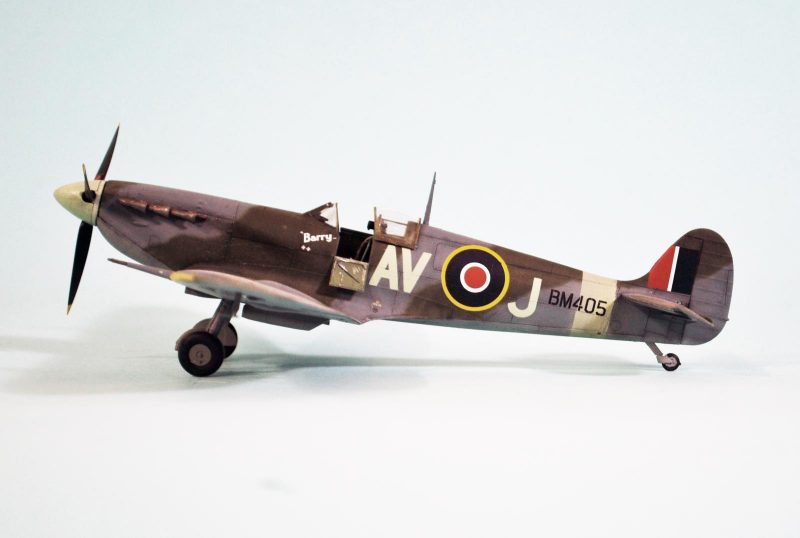
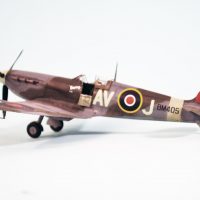

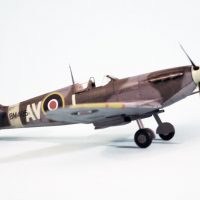
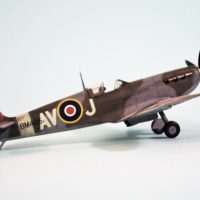
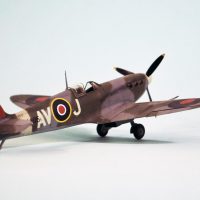

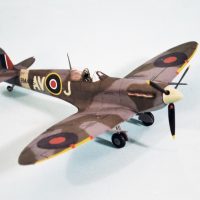


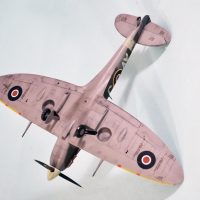
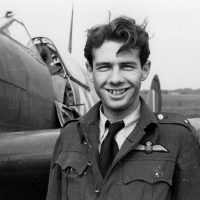
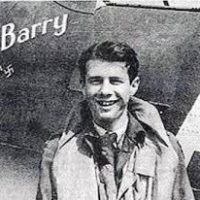
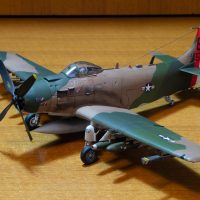
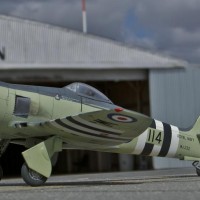
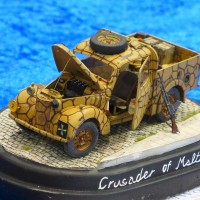
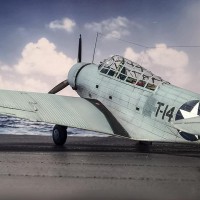
This is another great of your Spits, @tcinla.
Oh my, what an amazing story! Starting from the falsified papers and moving all along, POW, producer ...a true adventurer!
I bet he'd be one self fulfilled person!
Wish I'd known him!
Thanks for sharing this great story!
Indeed, a one of a kind life story! Barry deserves more awareness, who knew that the main character of “The Great Escape” was based on him? Great model as usual Tom! Always one step ahead of Eduard’s new releases ahah
What a story ! Always wondered about the clipped spitfire and why that was. Thanks for explaining . Great model and build.
Errol Flynn , Mc Queen and Gina lollobrigida... Bautista, Che, Havana in the 50 ies ?Different times And morals for sure.
Try being this way now
Which is why I often say I wish I had been born 20 years earlier, to have been a screenwriter in those days. I had the privilege of knowing some of the folks from the "golden age" and they were all fascinating.
What I find interesting is a reoccurring theme of WWII vets or "The Best Generation" produced some of the most creative people and a generation that looked towards the future and was not afraid to embrace it . . , after witnessing the horrors of war. Many folks carried with them a up beat half/full glass towards life. Your fortunate to have met Barry and find someone who had the confidence to be a mentor and pass the torch to a younger generation TC.
Another TC classic that hits all the high notes and brings home the bacon.
Two thumbs up.
Superb story about Barry. Always wondered who inspired the McQueen character.
Interesting to note that Barry started his first business in Glendale. That's where I first saw "The Great Escape" at the Alex Theater which I think is now a historical landmark.
Thanks for this posting TC.
I used to be a member of the Alex Theater Group who held screenings of classic films there once the place was restored to its original glory back in the 90s. Often we would get some of the originals who had been in/involved with the movies to do interviews afterwards. I got to interview Ernest Lehman about writing "North By Northwest" (he and Hitchcock argued for weeks about how to get them off the monument and end the movie, until Lehman came up with "alley oop" into the upper berth because of course they got off). Cyd Charisse (who was still a stunner in her 80s) had great stories about "Singin' In The Rain," my all-time favorite musical.
Everything superb!
The article and the model ofcourse.
Congratulations my friend. Beautiful aircraft
Great story and build Tom.
Great job, Tom. I like the way you can build several different variants from the Eduard kits.
Nice Spit Tom. To what book were you referring to as "Little Friends?"
It's a screenplay. Not a book. Although if I make good on my threat to write a book on VIII Fighter Command now that the Pacific War is over with next month's release of "Under The Southern Cross," all the research I did back then when they were all alive and I could talk to them will end up in that book.
great story and Spitfire as usual Tom!
Wonderful story and ditto build, Tom. @tcinla
What an exceptional life this man had.
It must have been a privilege to meet with him.
Excellent build and story. Barry's story makes the model more interesting than most ace planes.
There are not too many humans that can say they had a life like Barry. He was a pretty amazing guy. The read on the Spitfire is always good to read...the Merlin 45 in itself was an excellent engine for the mid to low altitude range. I always wonder how much better the P-40 could have been if it had the Merlin 45 or 45M instead of one from the 20 series...and you have made a great looking Spitfire!
WOW Tom such an amazing story. I always learn something new from every model you post. Your Spitfire is definitely something to treasure. Well done!
I like your model projects and the stories that come with them. But pleeease, try do something about the photos. Bit too unsharp and grainy and I think we miss out a fair bit.
Sorry, I don't have a macro lens.
Great story and model! Was that “then-“hot” actor who was also a pilot and fan of World War II aviation,” Cliff Robertson?
No. Cliff actually got mentioned by the actor's agent as a casting possibility, until I pointed out that the oldest guy in the story, Don Blakeslee, was 27.